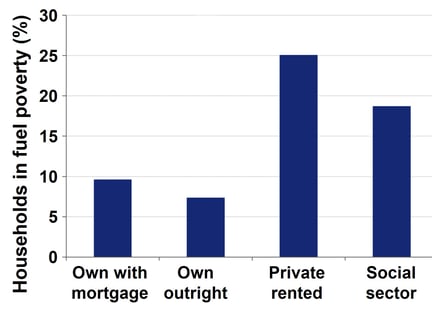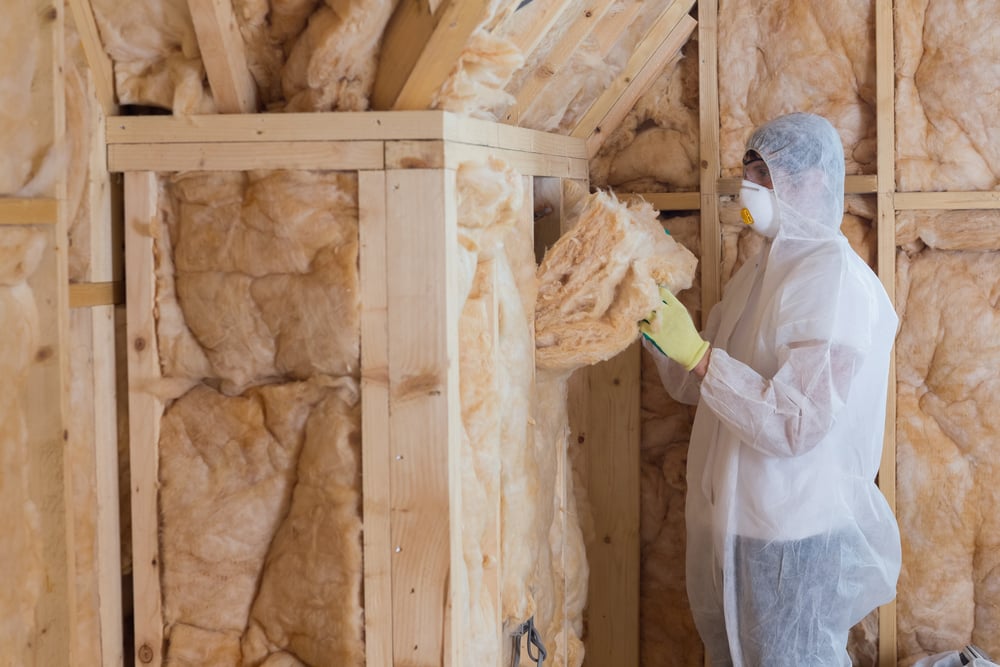
Infrared panels heat surfaces directly, making them more efficient at preventing condensation than convection systems that transfer heat energy through the air. However,...
Sensor data inform cost-effective approaches to damp and mould problems. They may be as simply as changing occupants’ behaviour, or they may require renovations to fabric and services. A sensor network enables renovations to be planned for maximum cost efficiency and forms the basis for ongoing monitoring and service automation.
This article is the fourth in our series on damp and mould in the home. The others are:
Mouldy homes 1: how damp causes mould
Mouldy homes 3: knowledge gaps
Mouldy homes 5: is infrared a solution?
The previous article covered how a landlord can monitor a large property portfolio to identify conditions likely to lead to a mould problem, but identifying a problem is only the first step toward solving it.
A short-term solution is to use the mould-removers that can be bought from any supermarket, but they have their limitations. Anyone who has tried using them to scrub off mould will know how persistent mould can be and how difficult it is to get into every space that harbours it. On wooden surfaces, where mould can penetrate deeply enough to cause structural damage, the mould is likely to be protected from the remover except where it is on the surface.
Anti-mould paint is often suggested as a solution but our experience is that it tends to slow rather than prevent mould growth. There is no substitute for preventing the damp that enables it in the first place.
It is also likely to be worth considering what a tenant can do to reduce the accumulation of damp. Some simple suggestions are listed by Chris Scott of Permagard in an article primarily concerned with selling technical solutions. However, like the Housing Ombudsman [PDF], Scott acknowledges that a landlord can only expect so much of a tenant. If a tenant is blocking their ventilation, a landlord should consider whether they are doing so because they cannot afford to heat their home properly, which is why the holistic approach described in the previous article is important.
The oft-repeated truism, that occupants might cause humidity but a building causes condensation, is a cautionary tale for a landlord who is ultimately responsible for the building. Unfortunately, it’s a truism that’s often regarded as leading inevitably to conflict between landlords and tenants when it could equally point the way toward solutions. For example, humidity caused by a tenant drying clothes on radiators may be eliminated by the landlord finding a better place for the tenant to dry clothes.
Practical solutions are likely to arise from a combination of reviewing data and inspecting a property. For instance, high relative humidity combined with high carbon dioxide levels in occupied rooms indicates a ventilation problem. If a room appears poorly ventilated despite having adequate vents, the tenants may have deliberately blocked the vents to retain heat although an onsite inspection would be needed to confirm.
Given the poor state of repair of much of Britain’s housing stock, it is likely that many cases can only be resolved by renovating the building’s services, fabric or both. Any push toward renovating social housing will evoke mixed feelings in landlords required to pay for it. However, part of the value of a data-driven approach to renovation is to plan a cost-efficient renovation, actually solving the problems it is meant to solve and ensuring that they do not become recurrent complaints after the renovation. It also ensures a renovation takes account of all issues likely to affect a home.
 |
| Percentage of English homes in fuel poverty divided by tenure. Data from 2020 and published in DBEIS (2022) Annual Fuel Poverty Statistics in England. |
For example, a solution to a damp problem that increases heating costs is unlikely to be implemented in a low-income household. With nearly a fifth of households in the social rented sector and a quarter in the private rented sector meeting the government’s definition of fuel poverty [PDF], most renovations should aim to reduce heating costs at the same time as they reduce damp.
While collecting and processing building data uses cutting-edge technology, the solutions indicated are often familiar ones. The best way to keep a wall’s temperature below the condensation threshold is usually to ensure it is insulated but without appropriate data, a renovation might set out to upgrade the insulation across a whole wall surface when it is only a few cold bridges that fall below the condensation threshold.
The more high-tech approach of automation may be appropriate when considering upgrading services like heating and ventilation, which present the challenge of lowering indoor humidity without increasing energy costs. Automation may be achieved by extending the functionality of the sensor network installed to collect data, maximising the efficiency of the existing or possibly upgraded heating or ventilation devices. The ideal approach will need to be selected for every home, based on data-driven planning, but some commonly used approaches include:
Recently, there has been some interest in replacing existing heating systems with infrared panels, which we will discuss in the following article.
Once the renovation is complete, the sensor and meter network that underpinned will still be in place. Ongoing monitoring of the building may be considered part of the renovation because it enables an ongoing assessment of whether the expected improvements have been delivered. If not, that data can be used to add to the renovations if necessary.
 |
| Insulating a wall (Shutterstock) |
Ideally, further renovations will not be necessary but ongoing data collection still has value. Continuous monitoring is often the quickest way to identify maintenance issues that may be expensive not to address. For example, an ongoing high level of humidity with no obvious cause may indicate a leaking water pipe that will cause structural damage if it is not repaired. Another example might be a lack of improvement in a room’s air quality despite the ventilation being engaged, which might indicate that tenants continue to block the vents.
Such issues can be detected by the way they cause sensor and meter readings to deviate from those expected from the service usage. Those expected readings can be set up on an operating system like atBOS so that any anomalies trigger an automated alert.
A final use of ongoing data collection is that it can demonstrate that a property is fully compliant with the Housing Associations’ Charitable Trust (HACT) data standards, as recommended in the National Housing Federation’s Better Social Housing review, or any other required standards. Being able to provide such firm evidence provides protection for a landlord in dispute with a tenant and, if the property owner is a public limited company, can be used to improve the company’s environmental, social and corporate governance (ESG) rating.
Britain’s damp and mould is a solvable problem that has remained unsolved for far too long. We welcome the recent attention that it has been receiving although we are concerned that it will motivate landlords to seize on insufficiently considered approaches that do not solve the problem at hand and may exacerbate other problems.
A cost-efficient solution that delivers a net improvement to a property requires planning underpinned by a thorough understanding of the property. We wholeheartedly support the Housing Ombudsman’s call for data-driven approaches to eliminating mould and to property management more generally. There is a wide range of possible approaches and with the right data, the right approaches can be applied to the right properties.
If you’d like to know more about how the atBOS platform can help address damp and mould problems, ask us on the form and we'll be happy to discuss it.

Infrared panels heat surfaces directly, making them more efficient at preventing condensation than convection systems that transfer heat energy through the air. However,...